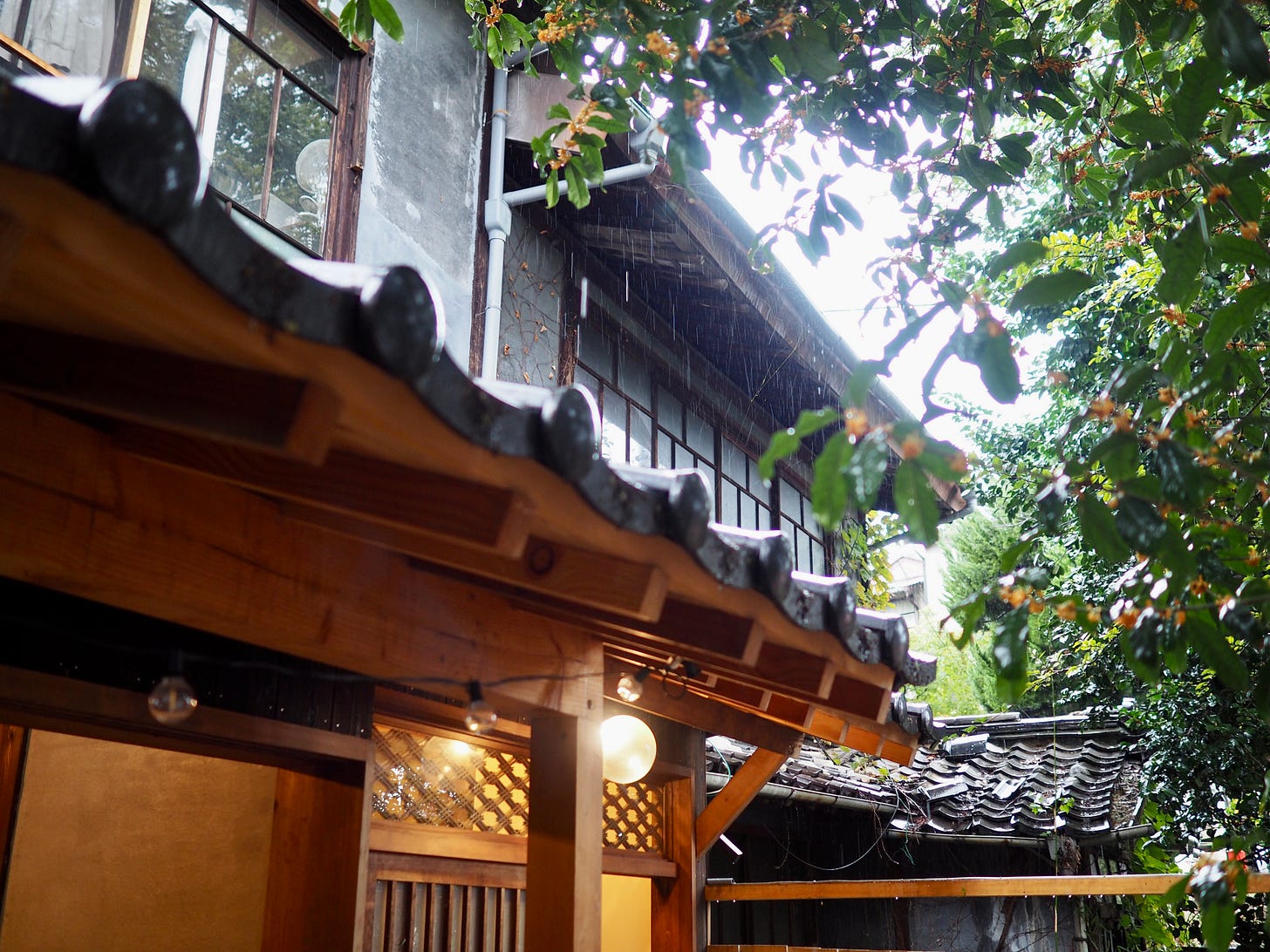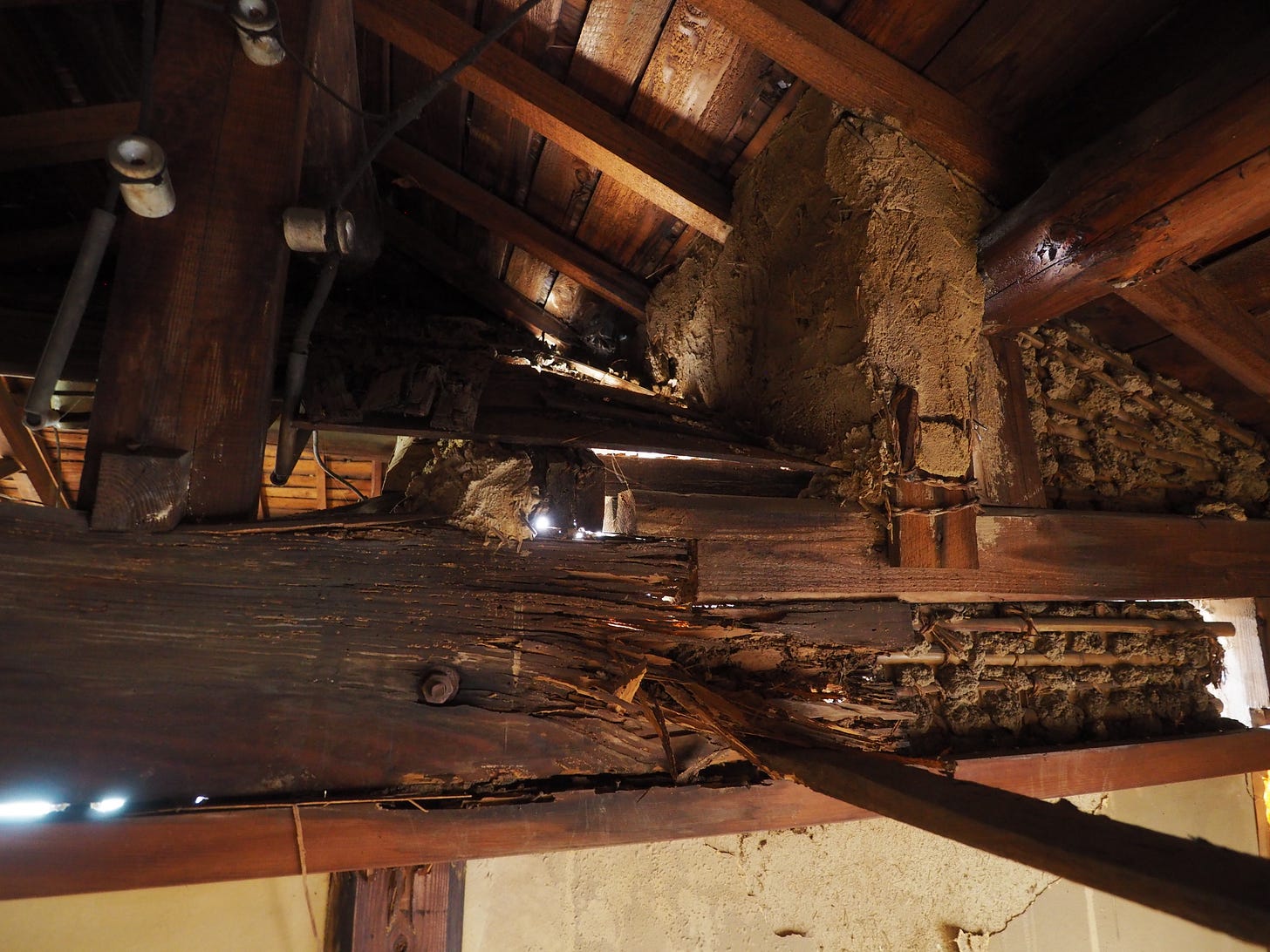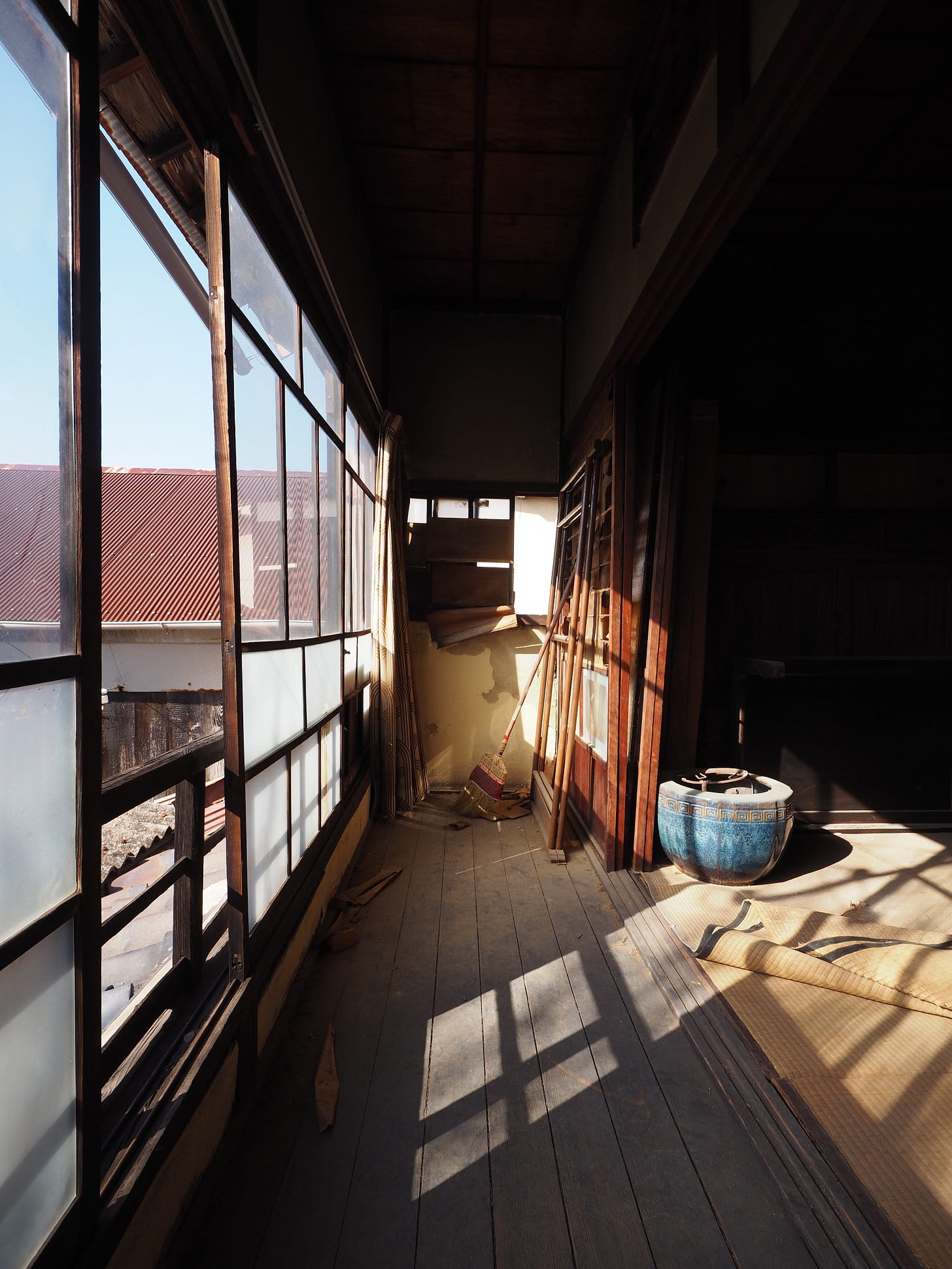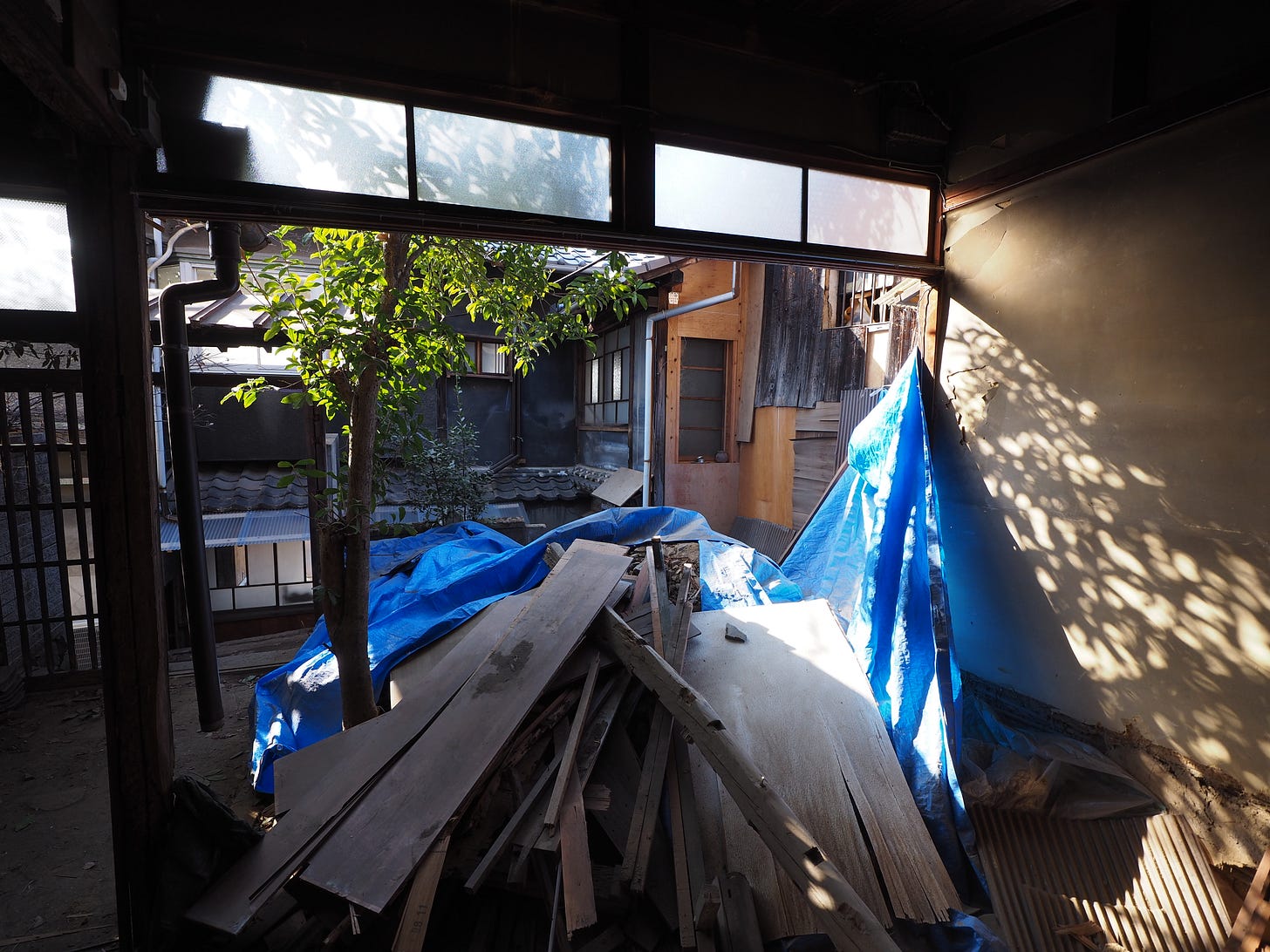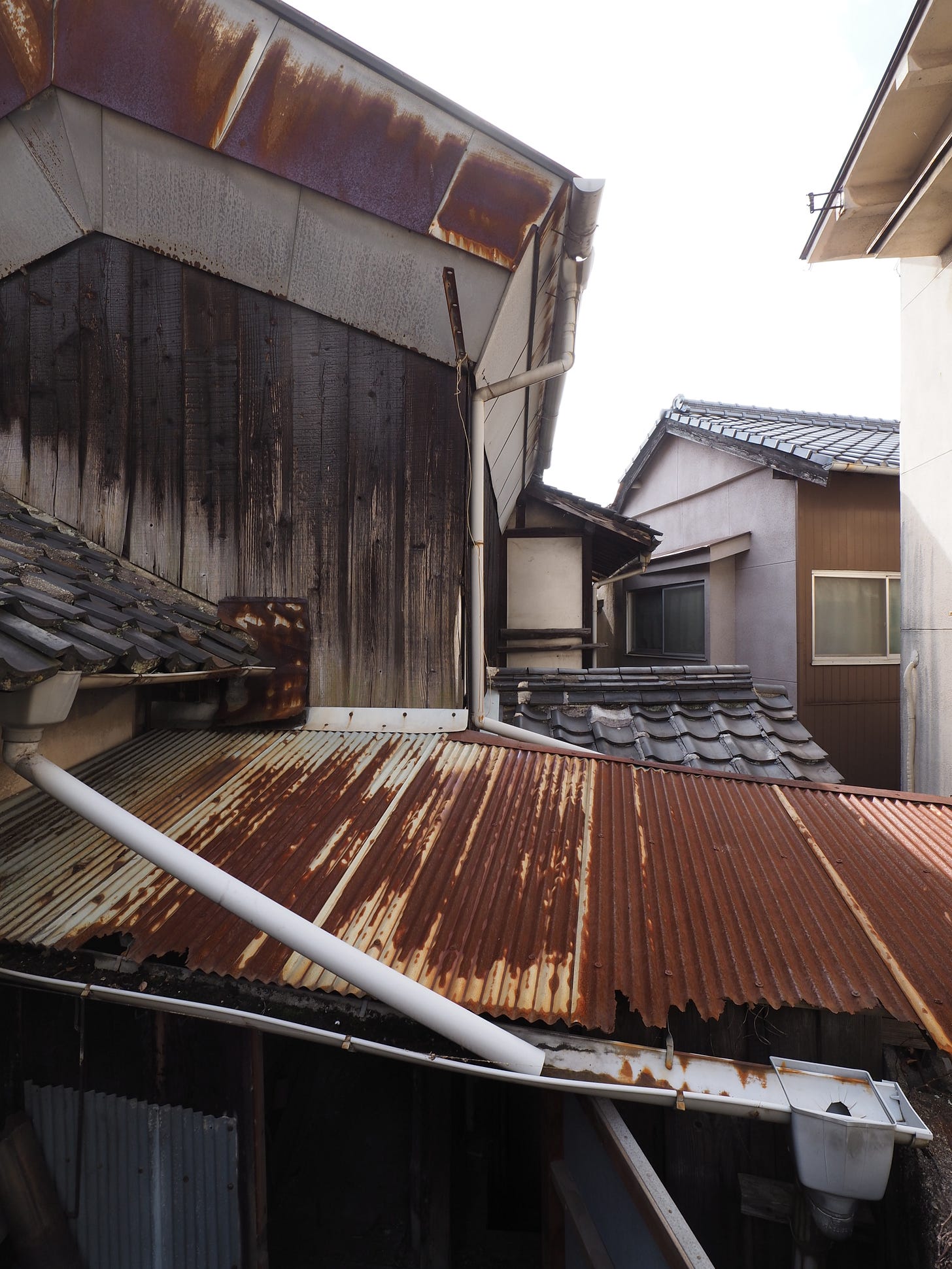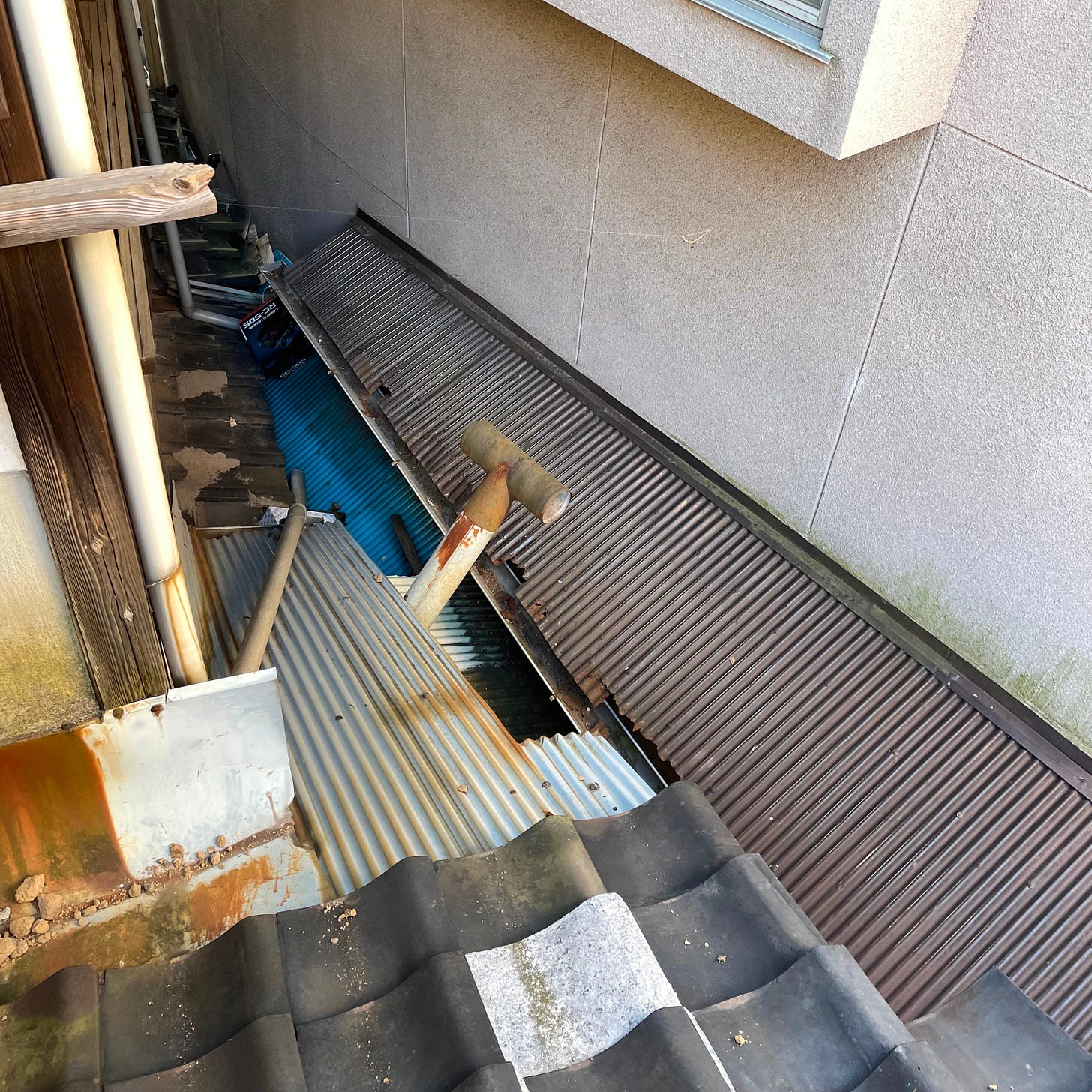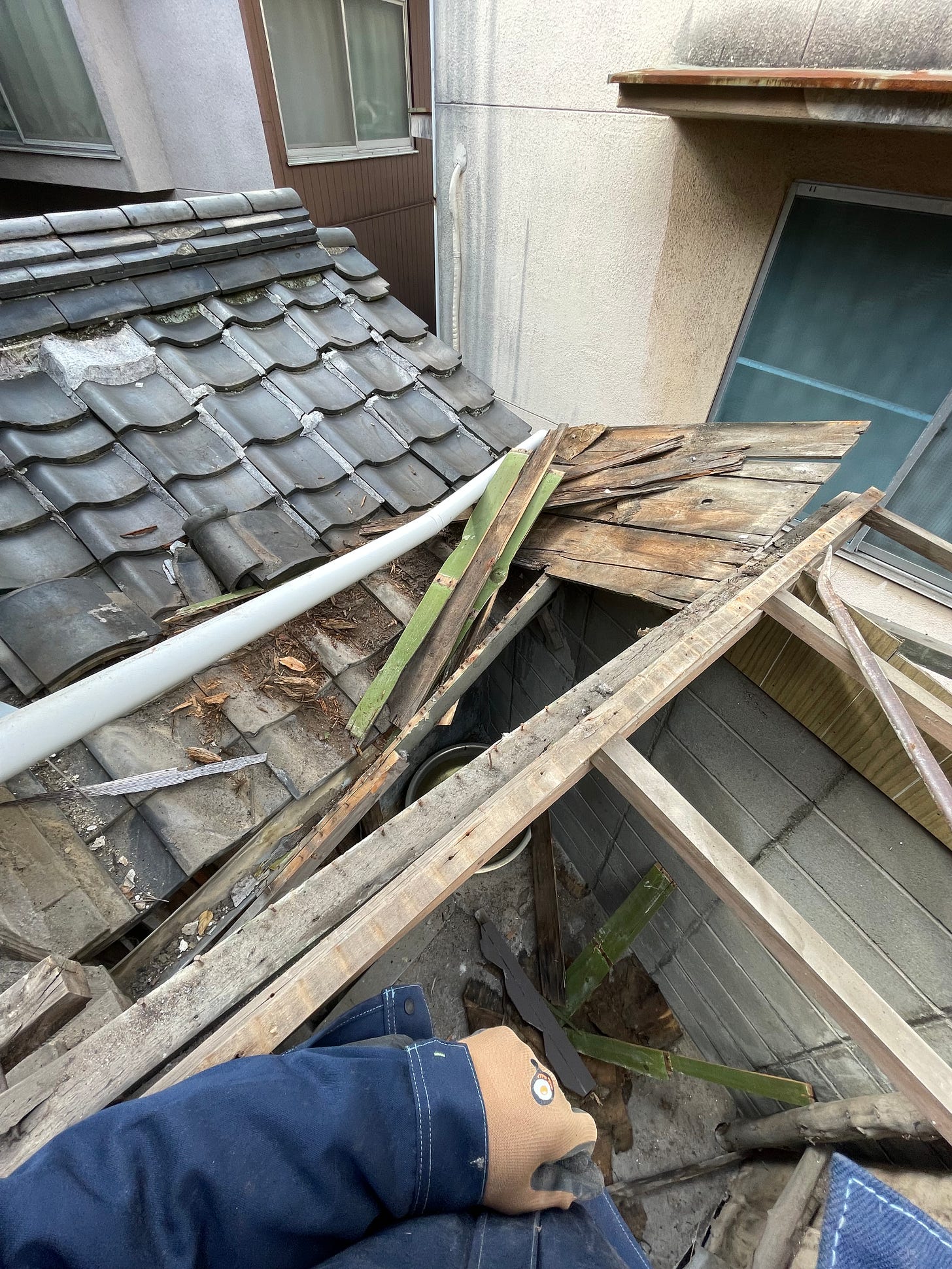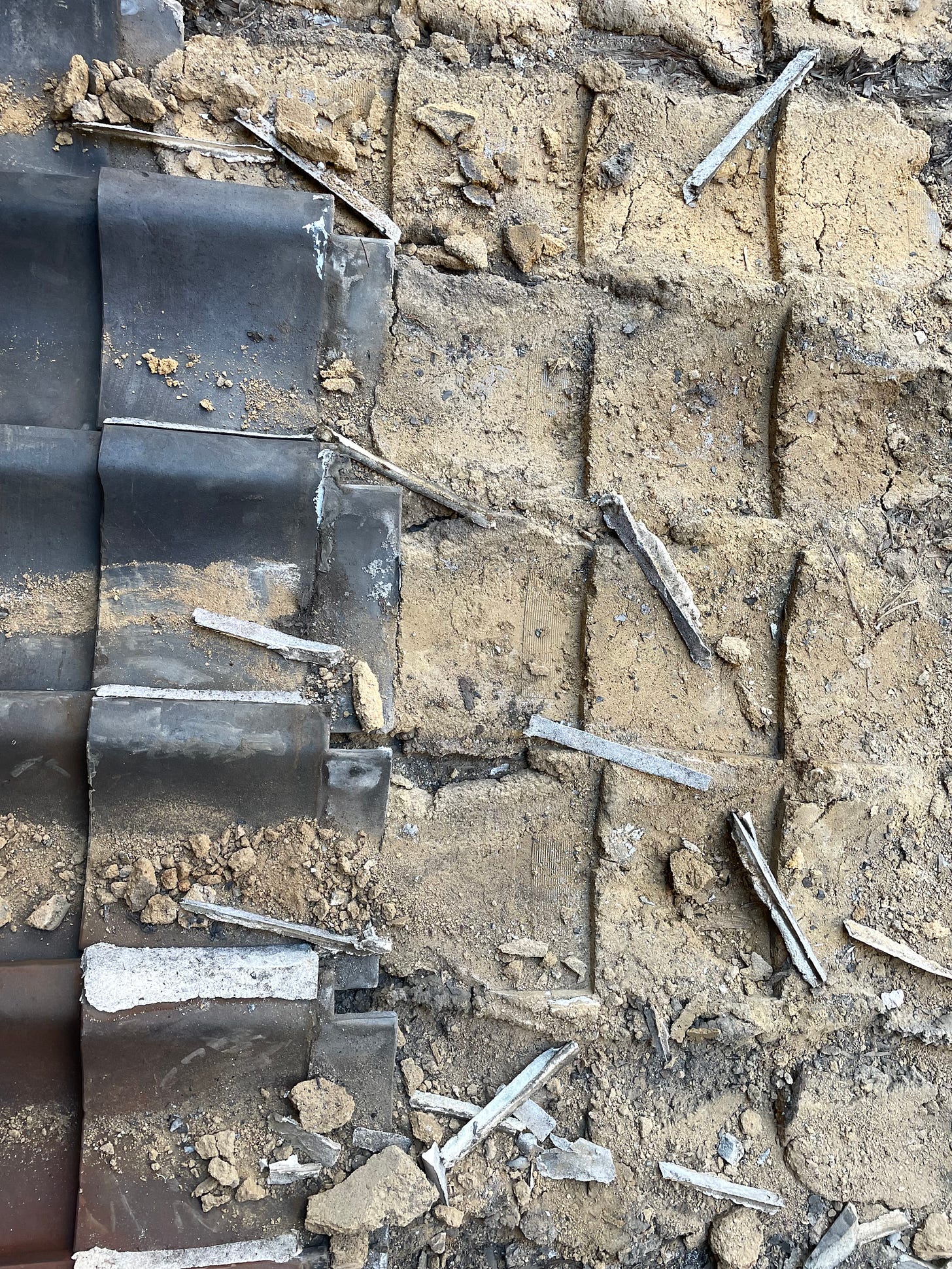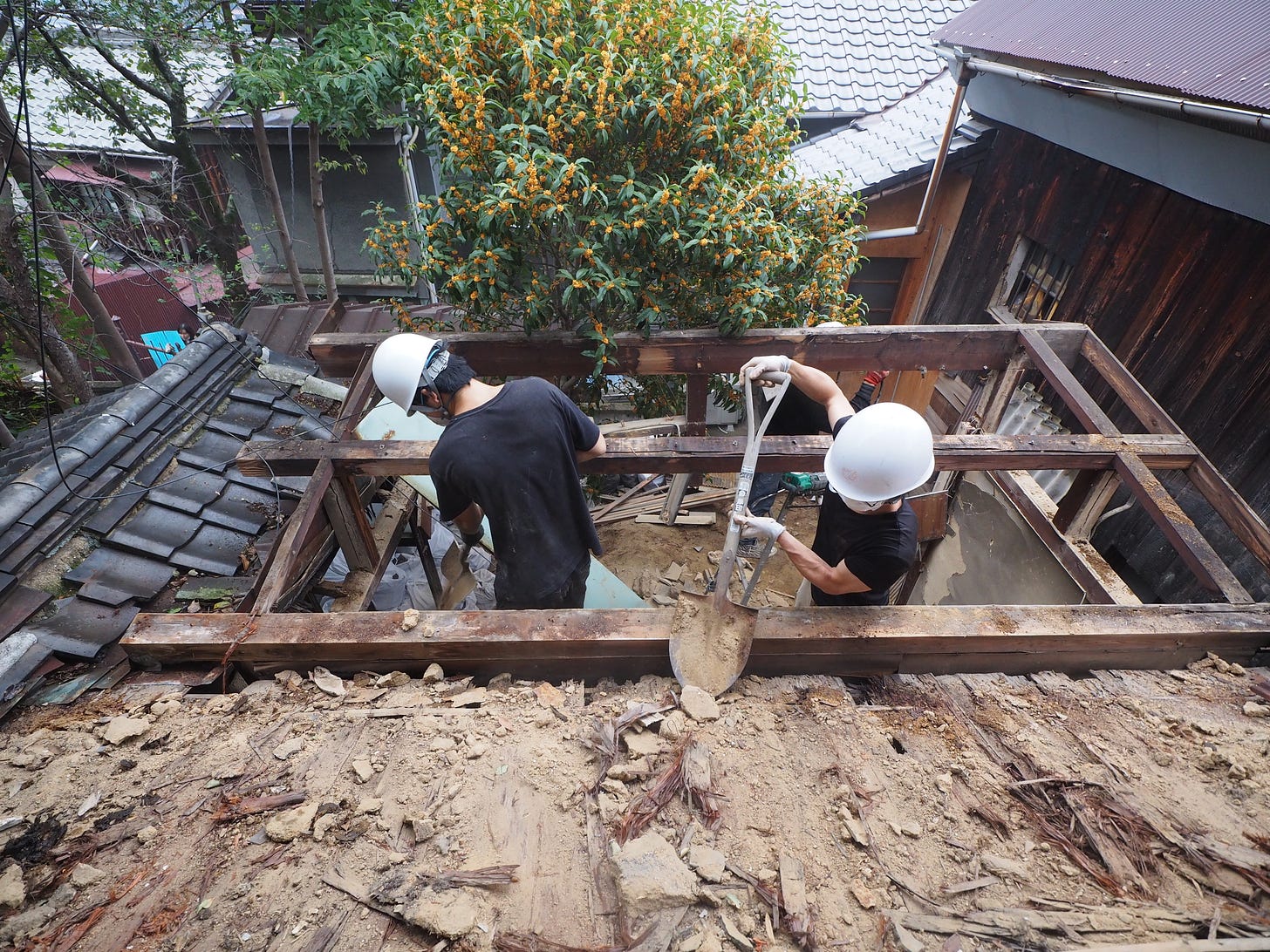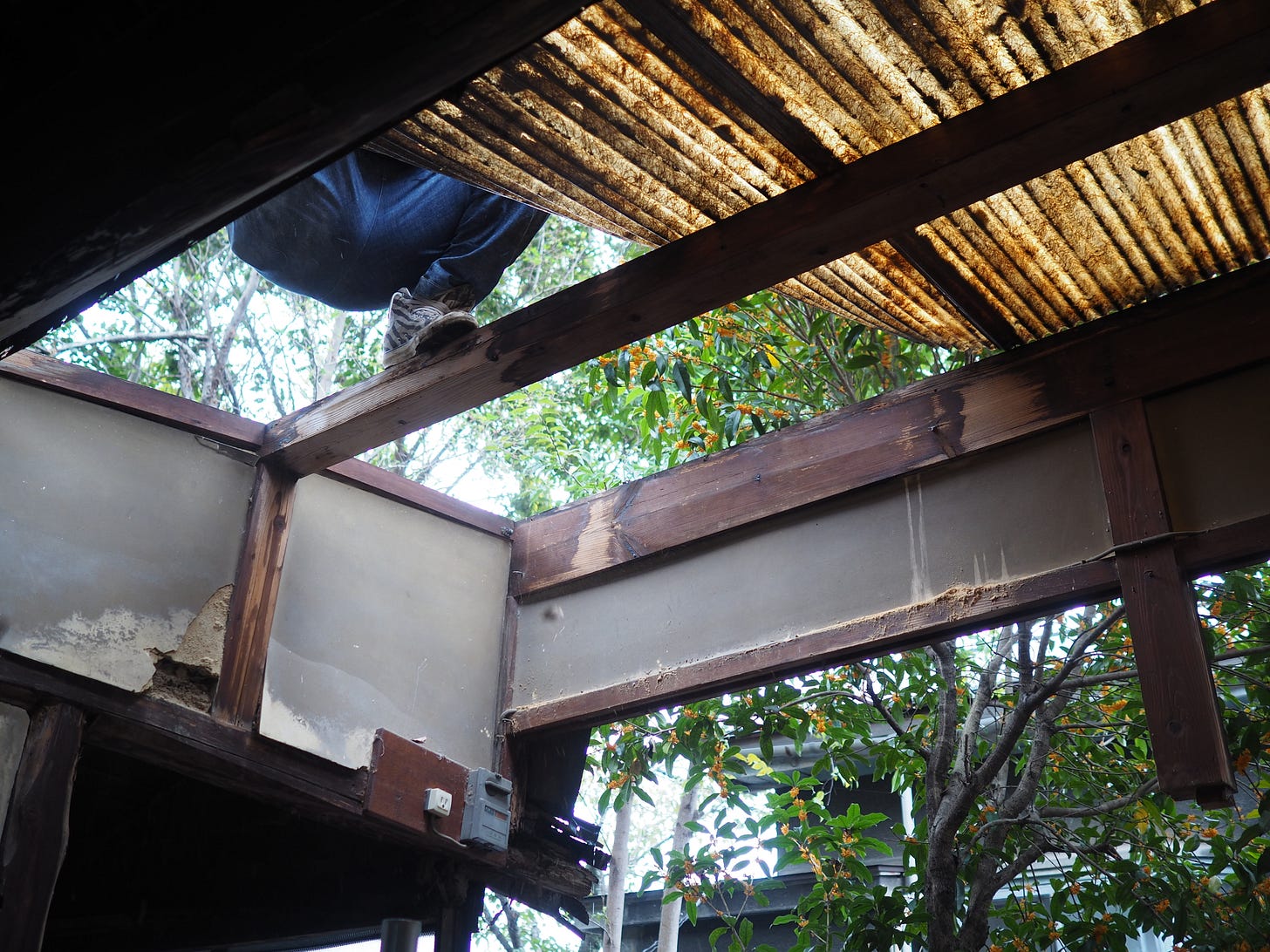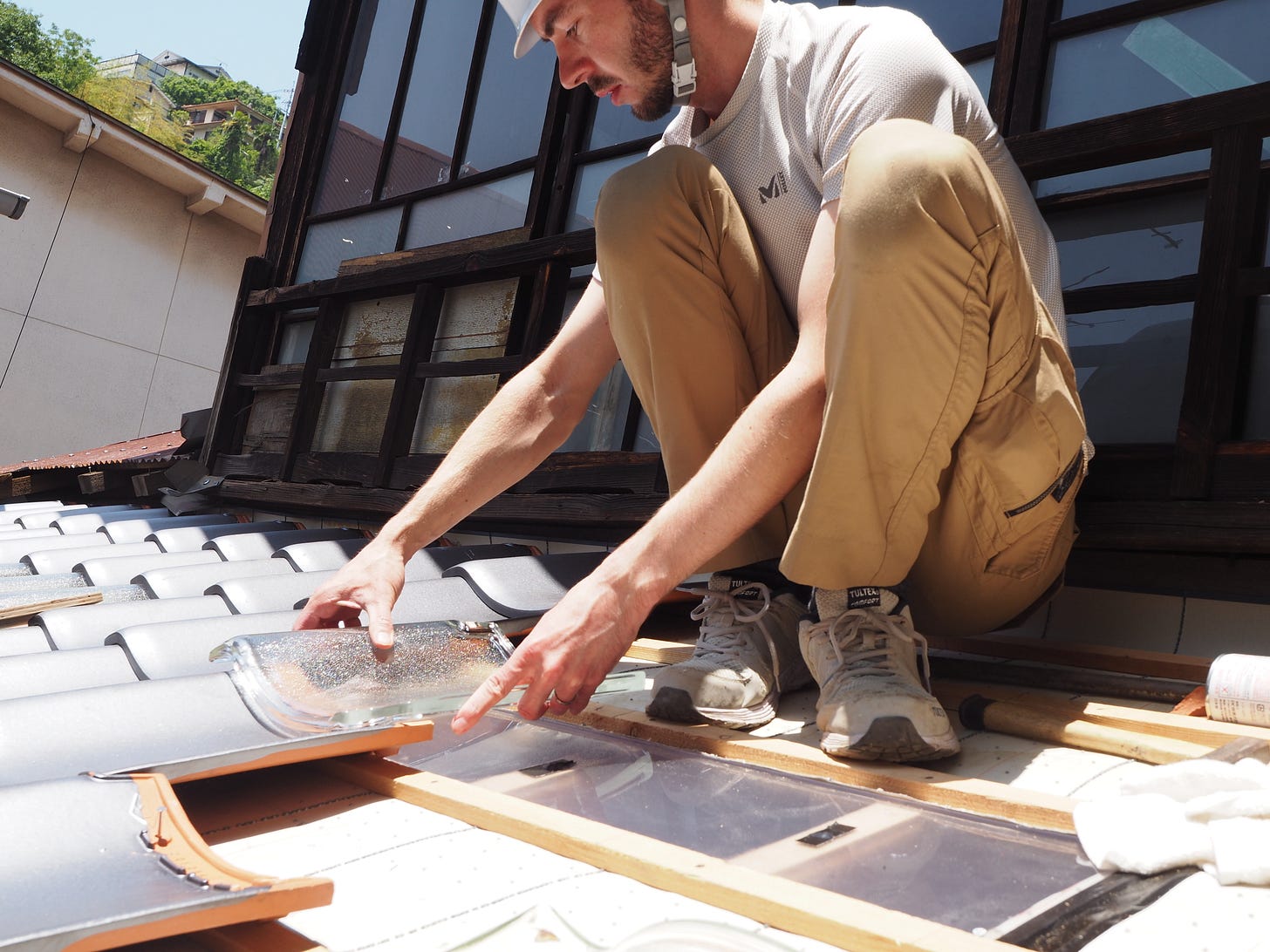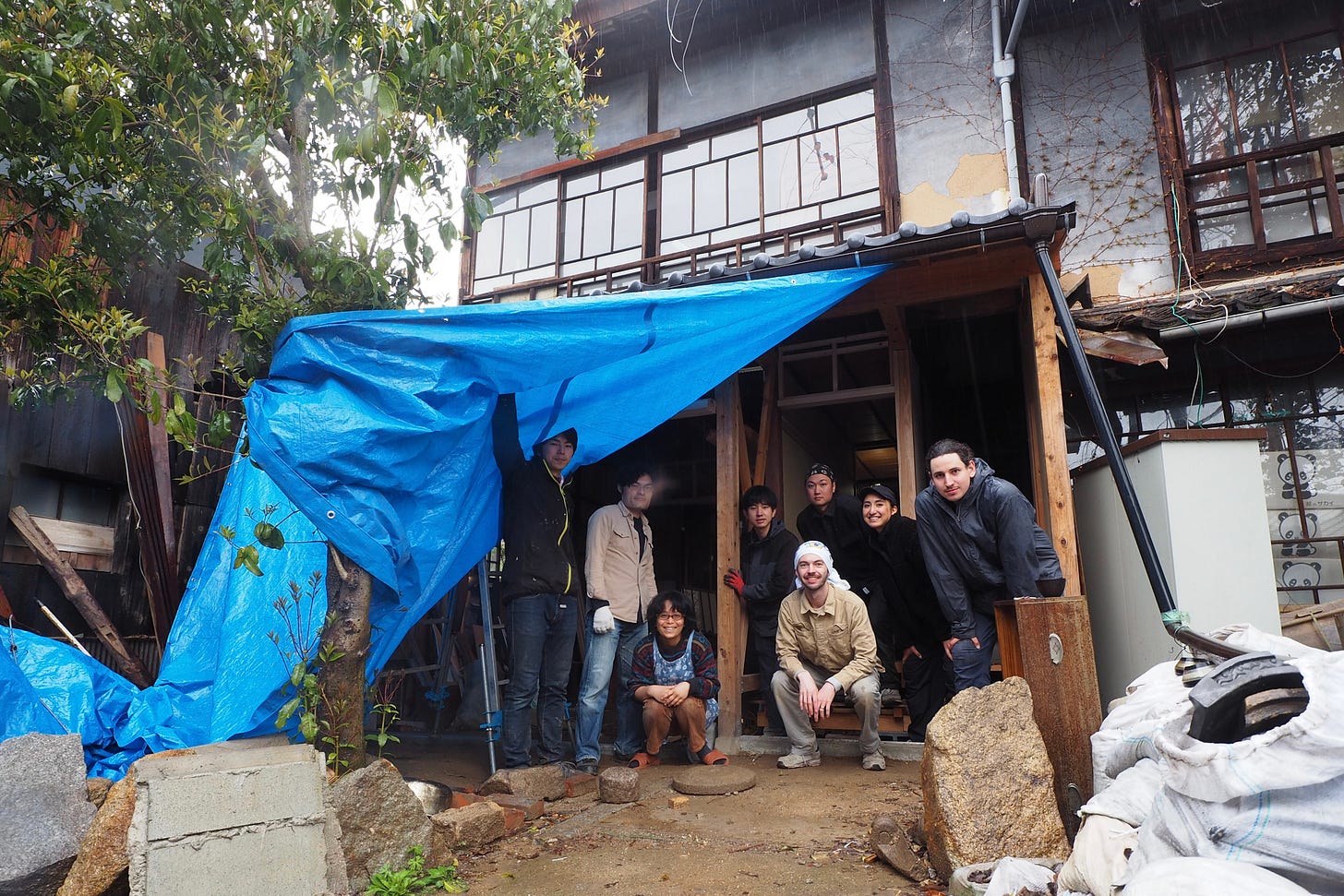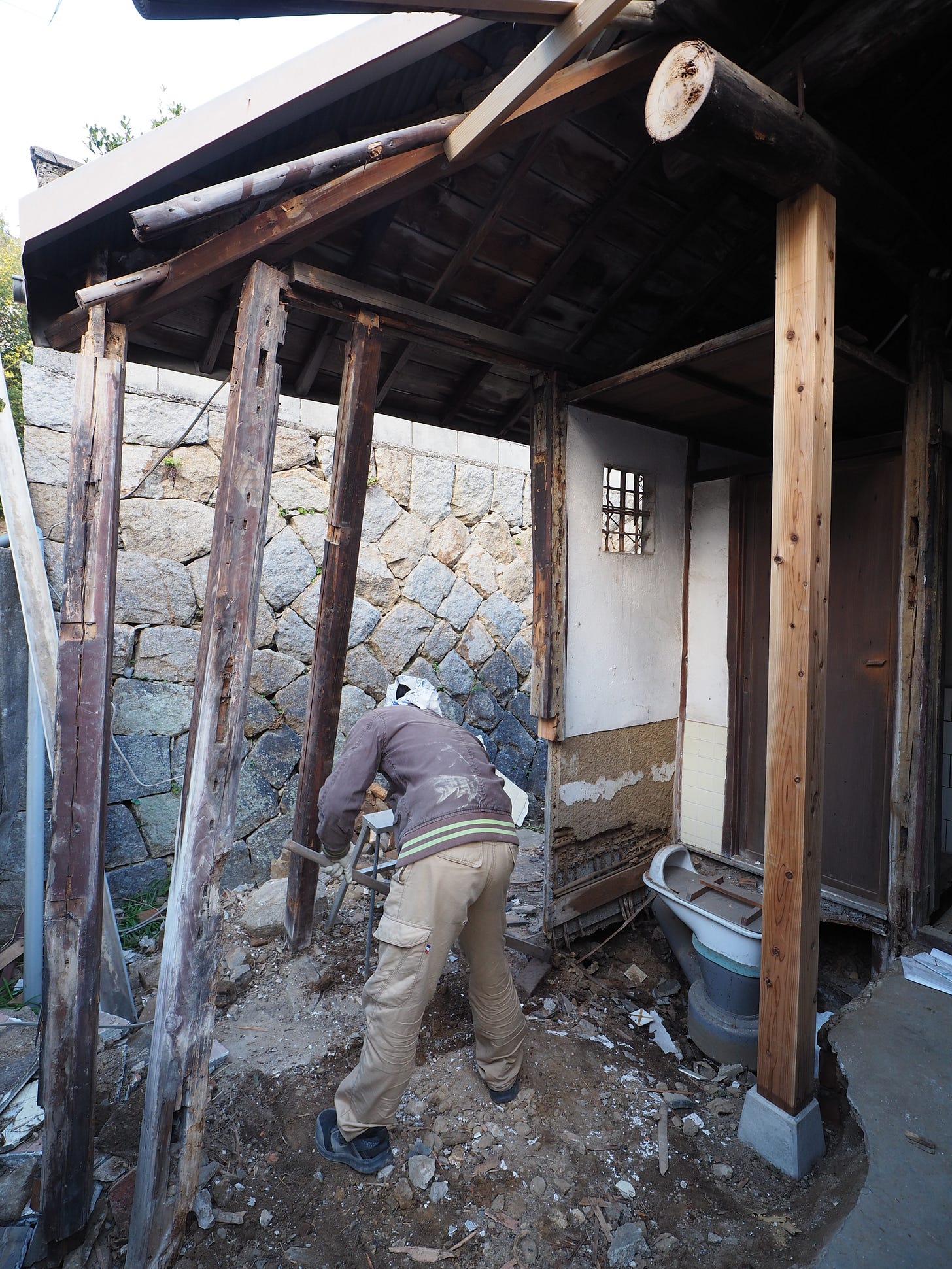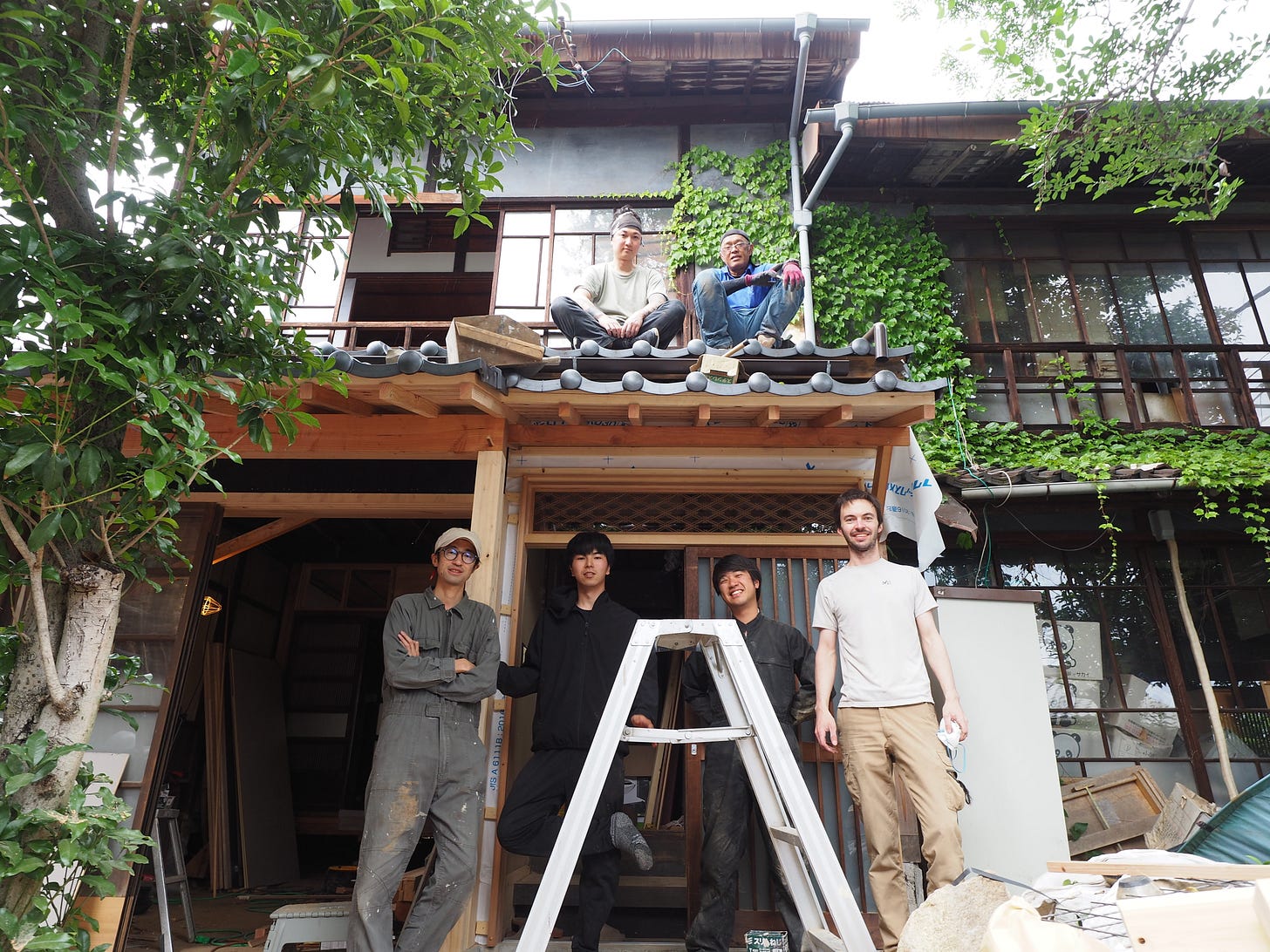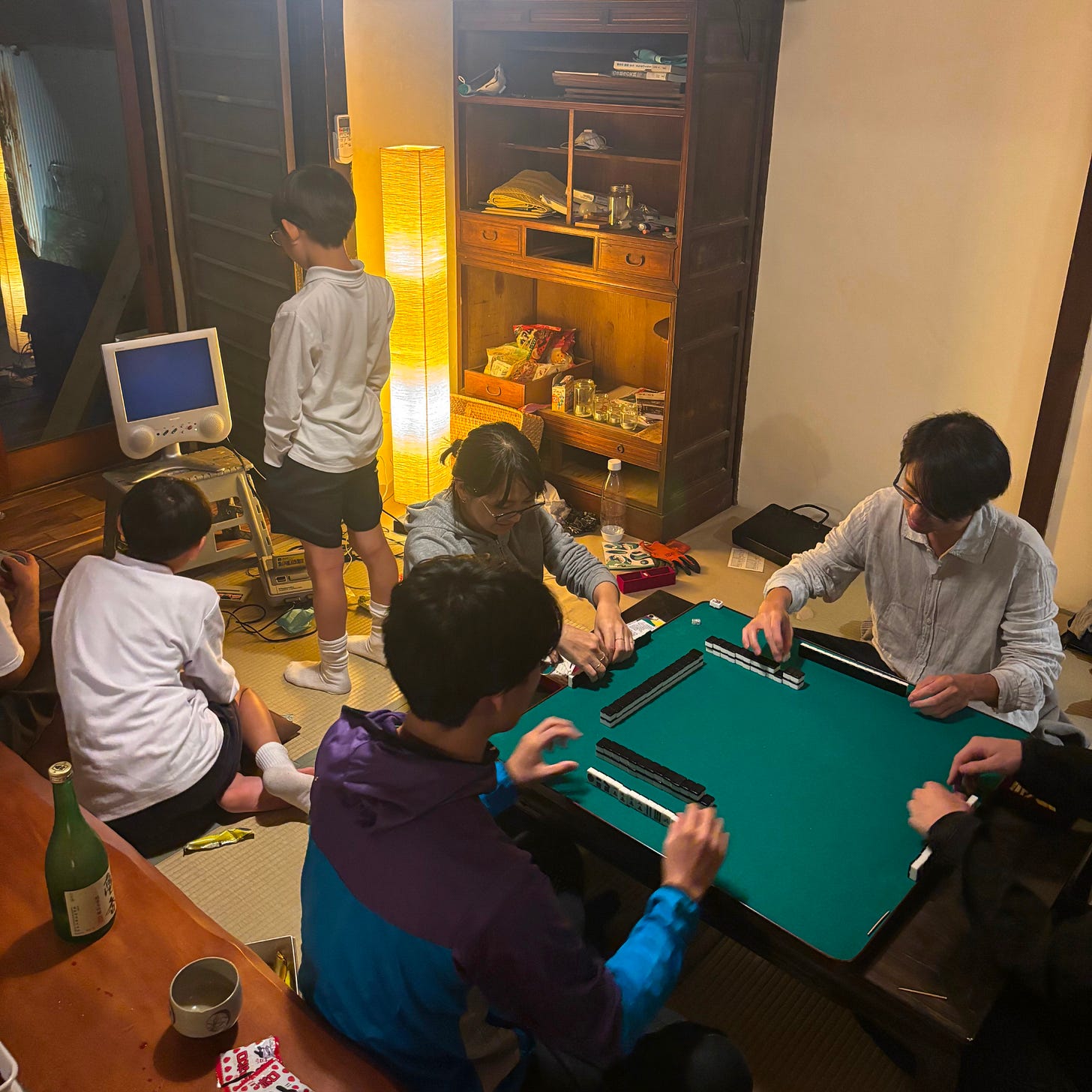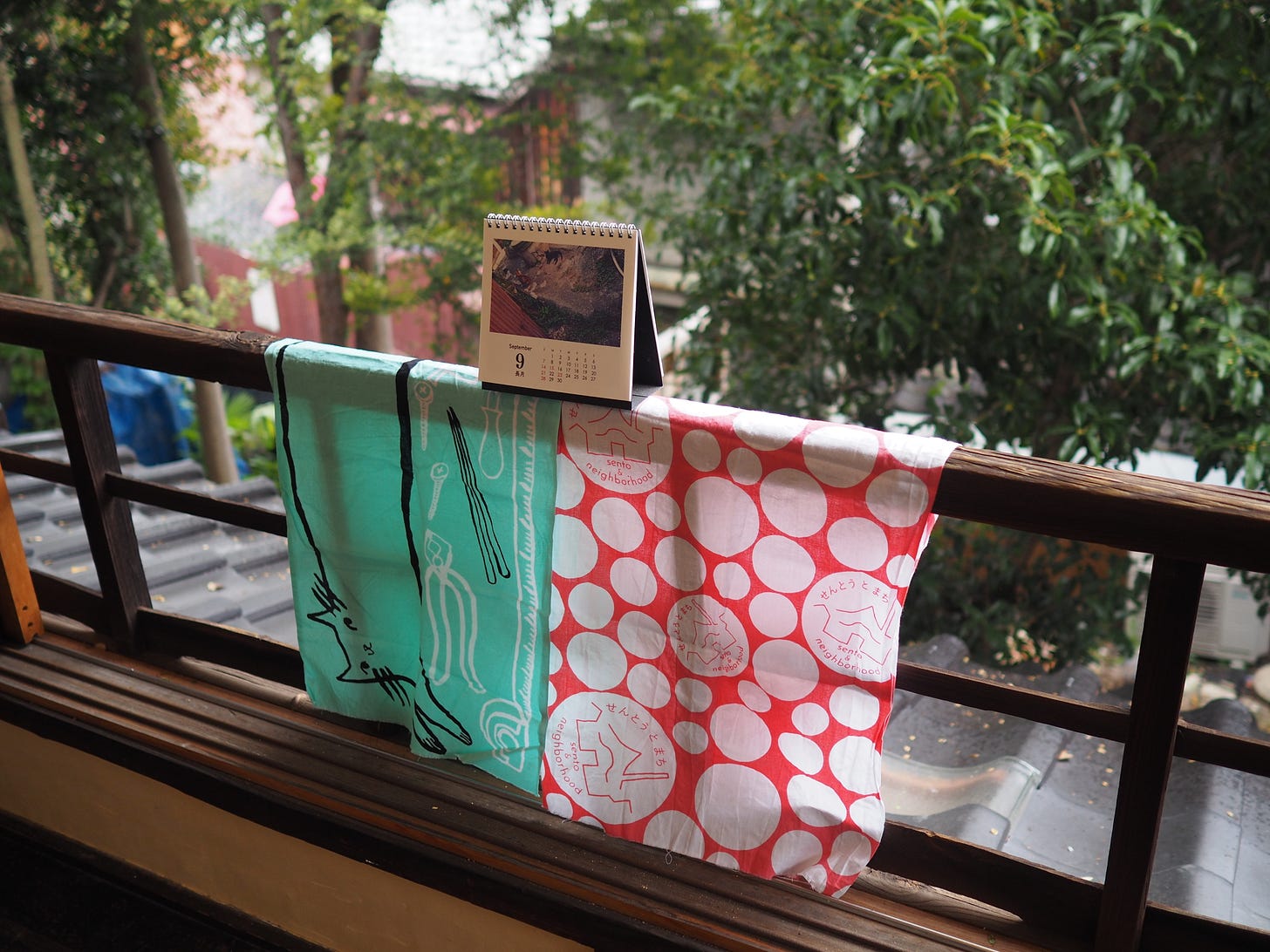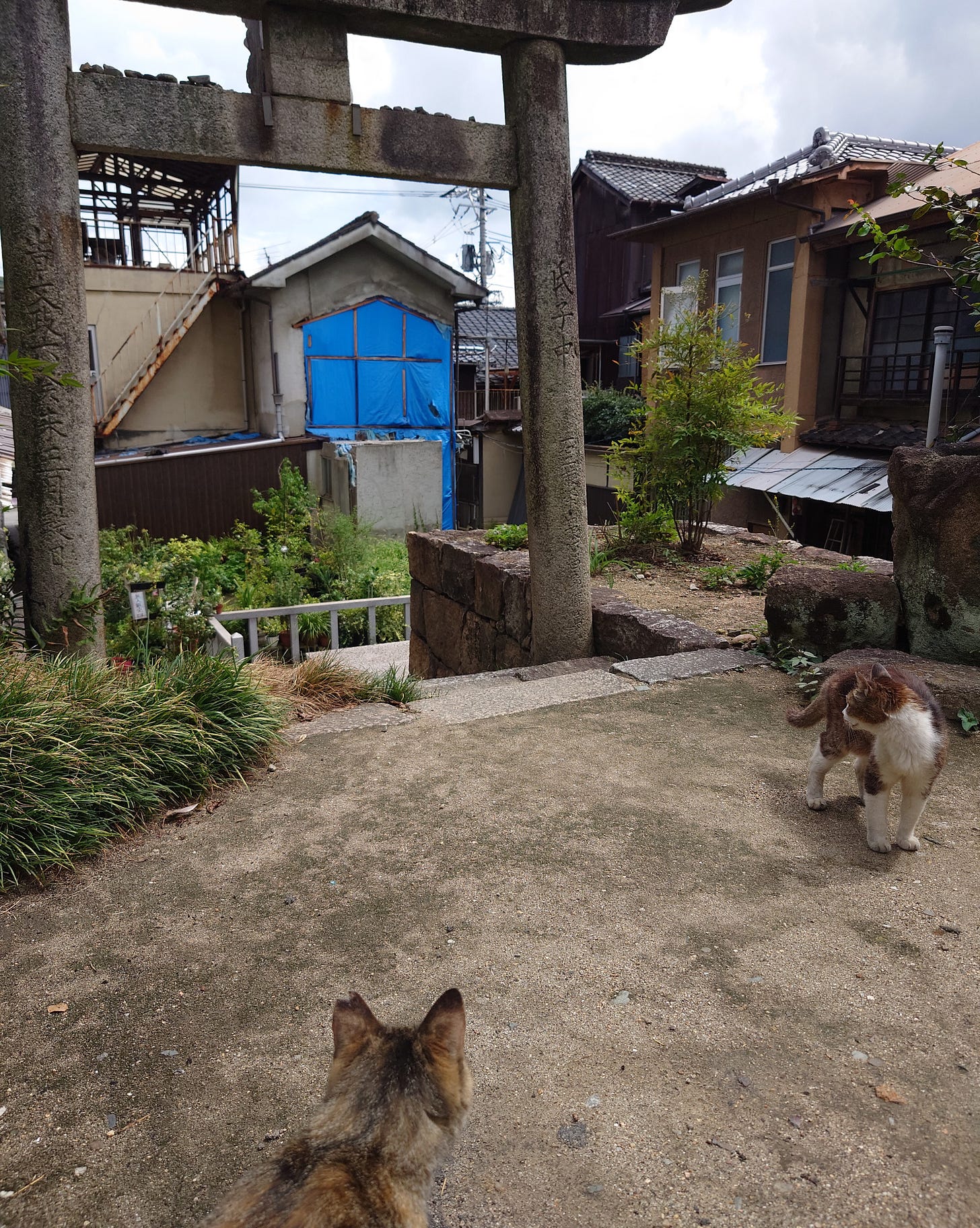A roof in the rain
Five years of Labyrinth, Substack subscriptions, and Onomichi cat calendars
We just wrapped up our 38th week of construction at Labyrinth House. This month also marks five years since we started, which pencils out to about a sixth of the last half-decade of my life spent rebuilding these houses in Onomichi. I’m writing this in the Shinkansen on the way back to Tokyo, and this is the first time in a week I’m looking at a screen and touching a keyboard for more than a few minutes. Instead, I’ve been staring at walls and working with water—mixing plaster and dirt, washing trowels, squeezing sponges, scrubbing columns and floors, mostly ignoring the painful fissures spreading across my fingers.
Last night around two a.m., as if in a dream, the sensory memory of my fingertips burbled up from my subconscious to submerge the whole world. The clouds brimmed over and began to shower Onomichi with something short of a deluge but much more than a drizzle—unbroken, steady precipitation that, hour after hour into the late afternoon, soaked the world as thoroughly as the sponge floating in my plastering bucket.
I’m a light sleeper. Back in Tokyo, I scarcely hear the rain at night through the thick windows, but here, the sound is immersive. I breathe in the thickened air as the pitter-patter quickens. My mind drifts outside. I think about the roof.
I think about the droplets slipping their celestial moorings and making first impact, the angle of their bounce, how gravity parabolically pulls them earthward again and they collide with others to form rivulets down the rusted chutes of the corrugated iron and the jagged cascade of the ceramic tiles. I follow the streams as they converge in corners, splash into the gutters, sluice down the drainpipes to the garden, and dribble down the stairs towards the stone culvert in the alley, or behind the house into the concrete ditch we dug to the narrow and steep flume that carries the water straight down the hill and into the sea.
I know this roof. I know its logic (and lack thereof), how its weight is conveyed from trusses through columns and across beams down to the foundation stones and into the ground. I know its weak points—the rough edges we’ll get to someday, the spots where the water is still squeezing its way in, eating away at the structure, the parts that will have to be torn open in five or ten years. I know it’s still hiding secrets from me.
I know this roof because I’ve climbed through its rafters and scrambled on its surfaces. I’ve stuck straightedges through beams that crumble like loafs of dry bread.
I’ve sniffed the moldy air of abandonment in the room where I now rest, and torn out its rain-soaked ceiling boards. I’ve hung tarps from the living room ceiling before rainy season to protect stacks of lumber from the water pouring in from gaping holes above.
I’ve marveled at how the roofs in Onomichi spawn smaller roofs, which spawn still smaller roofs that grow together like mushroom caps in the crevasses between buildings.
I’ve pulled down the broken roof tiles, shoveled off the dirt and tree bark membrane beneath. I’ve heard decades crunch in rotted wood underfoot and at the end of my crowbar, and splinted the stumps of rafters long since left for dead with freshly cut cedar.
I’ve peeled away roofs and observed as new configurations of space and light reveal themselves. I’ve watched the late afternoon sun pierce for a brief moment into a kitchen still deep in my imagination.
I’ve wrestled five-meter beams up the hill around narrow corners to hold up new roofs. I’ve laid out fresh tiles on top and seen the shadows of the sweet olive tree dance on the floor through the glass-tile skylights.
I’ve built a hidden attic between the oozing mud walls, and felt a flurry of butterflies as I ascend “up near the roof where all thoughts are clear”—to a space of dreams and rationality, a place where the carpenter’s solid geometry keeps us safe from the sun and the rain we fear, as Gaston Bachelard wrote.
Beneath this roof, I’ve walked the same route at night from my futon to the bathroom downstairs for three years, except now there are walls and floors and light and a toilet where not too long ago there was only mud and darkness and a hole in the ground.
I’ve done this alongside some of the best people I’ve encountered in my time on earth.
As the rain comes down outside, the bedroom is warmed by their bodies lying near me, comrades who’ve been with me since day one and some whom we’ve just met—architects and students who come for a few days or a few weeks to lend their labor because they’re inspired by what we’re making and how we’re doing it. They fill the house beneath this roof with home-cooked meals and conversation, the late-night clatter of mahjong tiles and Super Nintendo battles with the kids from next door. They sleep through the rain better than I do.
We’ve done this all in an age in thrall to fascists and techlords, when the people and systems with the most power are hellbent on sapping the world of meaning and convincing us that laws and knowledge, human creativity, locality and physicality no longer matter. The practice of building this house is as much an act of resistance towards this descent into unreality as the descent of our shrinking community into ruination. At two a.m., I lie awake in the warmth of my futon and think about the roof over my head that keeps me dry as the world outside precipitates. A roof feels meaningful. It feels real. Some days, this roof is all that I need.
About a year ago we launched our crowdfunding campaign to finish phase two of Labyrinth House. Many of you contributed, and I owe you all much gratitude and another update. I also want to explain how subscriptions to this newsletter will work this year (hint: there are cat calendars involved).
In the past year, we’ve done nine weeks of construction (more than the 2023-2024 season) and are now about 90% done—the kitchen, bathroom, electrical, and most interiors are complete. In December, we’ll build the earthen floor in the shop space and continue working on the bath. Last week, we also cleared out the warehouse that is going to be phase three, the library and archive. I’d like to record a walk-through video before the end of the year to show the current state (in the meantime, check out the updates on Instagram).
Substack subscriptions
Some of you contributed to Labyrinth House by subscribing to me on Substack, which means the platform will likely auto-renew your annual subscription in coming weeks. Last year, I considered all subscriptions as contributions to our project rather than payment for my writing. If you don’t want the subscription to renew, please turn of the paid subscription and by all means keep reading my work.
If you do re-subscribe at $50 (or newly subscribe, including the people who have subscribed since the crowdfunding campaign finished), I will send you a 2026 Onomichi cat calendar. Our 2025 calendar was a big hit, and I’ve enjoyed seeing the pages being turned in friends’ and neighbors’ spaces throughout the year.
Subscribers at any amount above $80 will get a cat calendar and a tea towel. If you already got a Labyrinth House towel (designed by Lili Mossbauer) last year, I will send one from Sento & Neighborhood (towel and logo designed by me), and part of your subscription will go to filling the coffers of my non-profit bathhouse preservation organization. If you don’t need the gifts and just want to subscribe, let me know.
Same as last year, the calendar photos are all taken by Tacchan, an Onomichi native who has been cooking meals for the Labyrinth House crew since 2021. I wrote a few months ago about how the city is alive, an idea that comes to mind with Tacchan. There is a whole society of cats in Onomichi with its own dynamics, a half-dozen of whom live around our house. We know them by certain names, while up the hill they’re known by others. In those early pandemic days, Tacchan was not working, and took daily walks for his hobby of cat photography. He passed by our house often, and one day he walked in. He wanted to help and said he knew how to cook. He arrived at just the right moment, when we needed someone to fill our bellies and sustain our stupid enthusiasm for each other and seeing these houses live on into the future. This was Onomichi living through our non-human neighbors and an urban environment built over generations, to bring us together in the same place.
Going forward, I have no idea how this subscription economy will evolve (or for that matter this increasingly slop-infested platform), but in the short-term, earning some income here would certainly motivate me to focus more of my time on writing. I’ve always earned my income as a translator, so for better or worse, my writing has never felt like something I should be doing. For the past five years, it’s always taken a back seat to building my projects and earning a living (plus extra to pay for Labyrinth House), but as this project nears completion, my desire is shifting towards putting things in words. I have essays gestating on Tokyo, on culture and tourism, on neighborhood life and urbanism. I want to tell stories about Labyrinth House. I have a seven-part exploration of diverging futures in the islands south of Onomichi plotted out. I want to write all that and much more, and would be pleased if you want to support that. But also, I would love to put a cat calendar in the mail to you. Thanks as always for reading, and hope you’re staying dry amid the rain.

